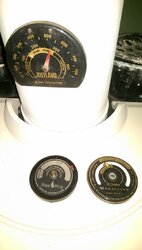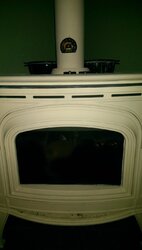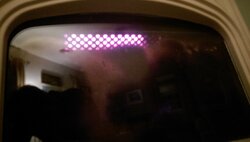Hey guys. Had my Ashford since November. Wood is below 20% on the MM fresh splits. 16-18% on the outsides. 15' total rise centrally located in house. Rises 4' above peak of rancher. Out of stove, I got 39" before 2 45s, single wall in house, double wall the rest of the way straight up.
In mild winter area, average low single digits. Normal high in winter upper 30s. Thought the BK was right for me, PERFECT heat output. Was thinking increased draft was all I needed. If that is the case, why is my stove burning wonderfully hot with my current set up, stat set on 2.25, cat happy as a clam and I'm STILL getting the sweet, Carolina BBQ smoke smell rolling off the top, front of my stove. Chimney was just cleaned. Didn't even get a half gallon of black creosote from 3 months of burning. I do get some smoke spillage on hot reloads.



So frustrating...
In mild winter area, average low single digits. Normal high in winter upper 30s. Thought the BK was right for me, PERFECT heat output. Was thinking increased draft was all I needed. If that is the case, why is my stove burning wonderfully hot with my current set up, stat set on 2.25, cat happy as a clam and I'm STILL getting the sweet, Carolina BBQ smoke smell rolling off the top, front of my stove. Chimney was just cleaned. Didn't even get a half gallon of black creosote from 3 months of burning. I do get some smoke spillage on hot reloads.



So frustrating...
Last edited by a moderator:


 I figured maybe that was just the way it was with a BK on a low burn...
I figured maybe that was just the way it was with a BK on a low burn...
 ),
),